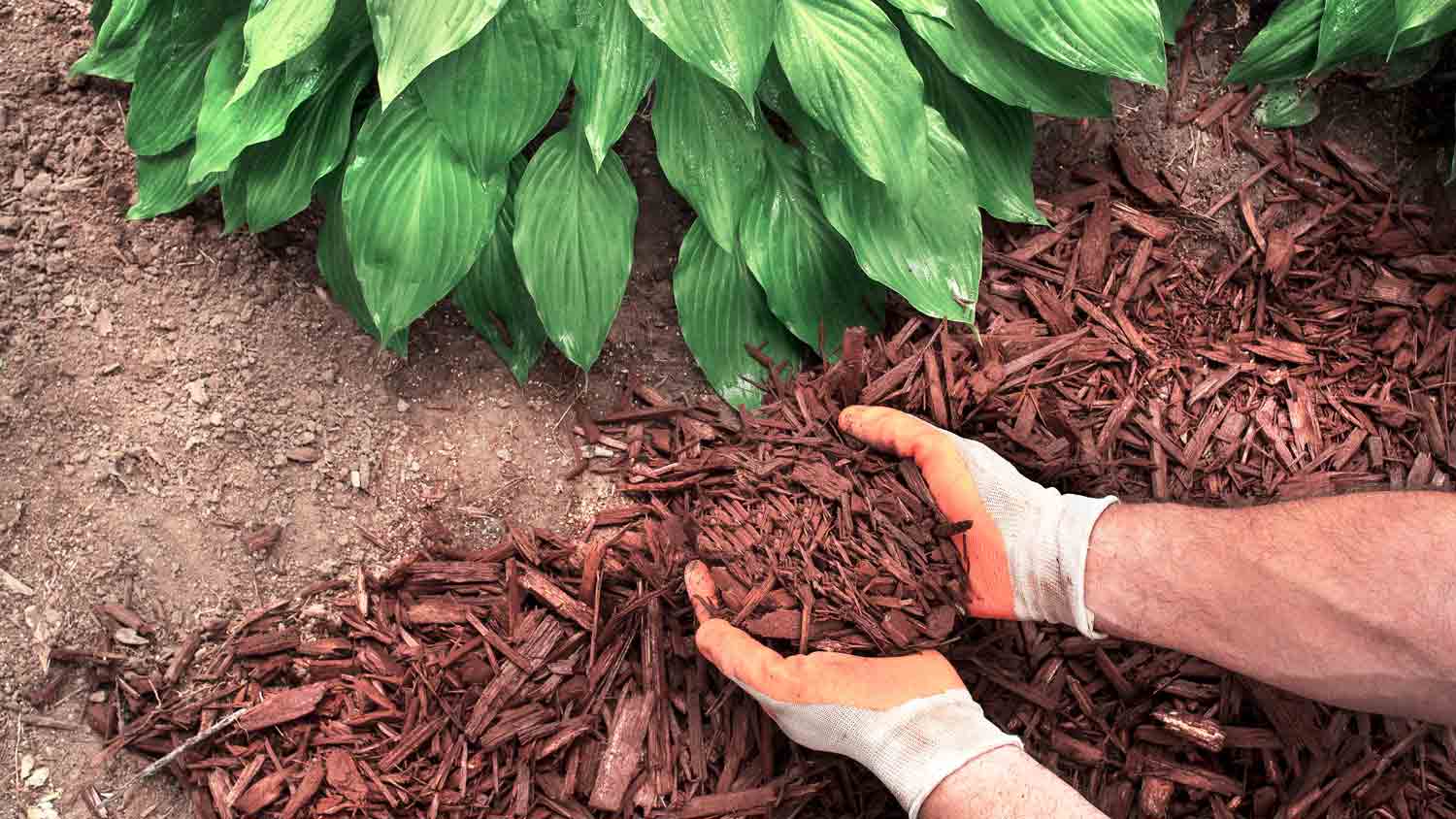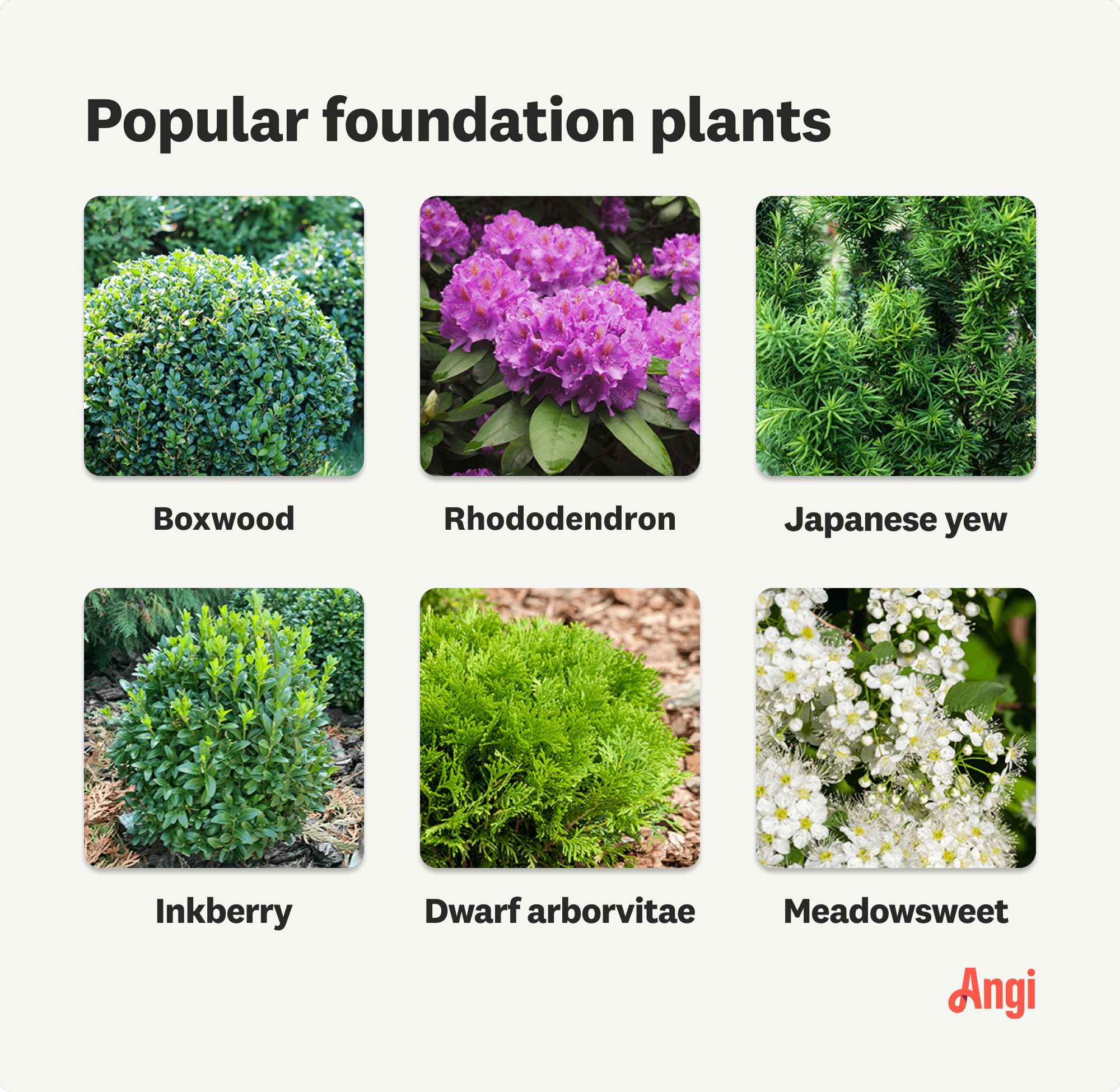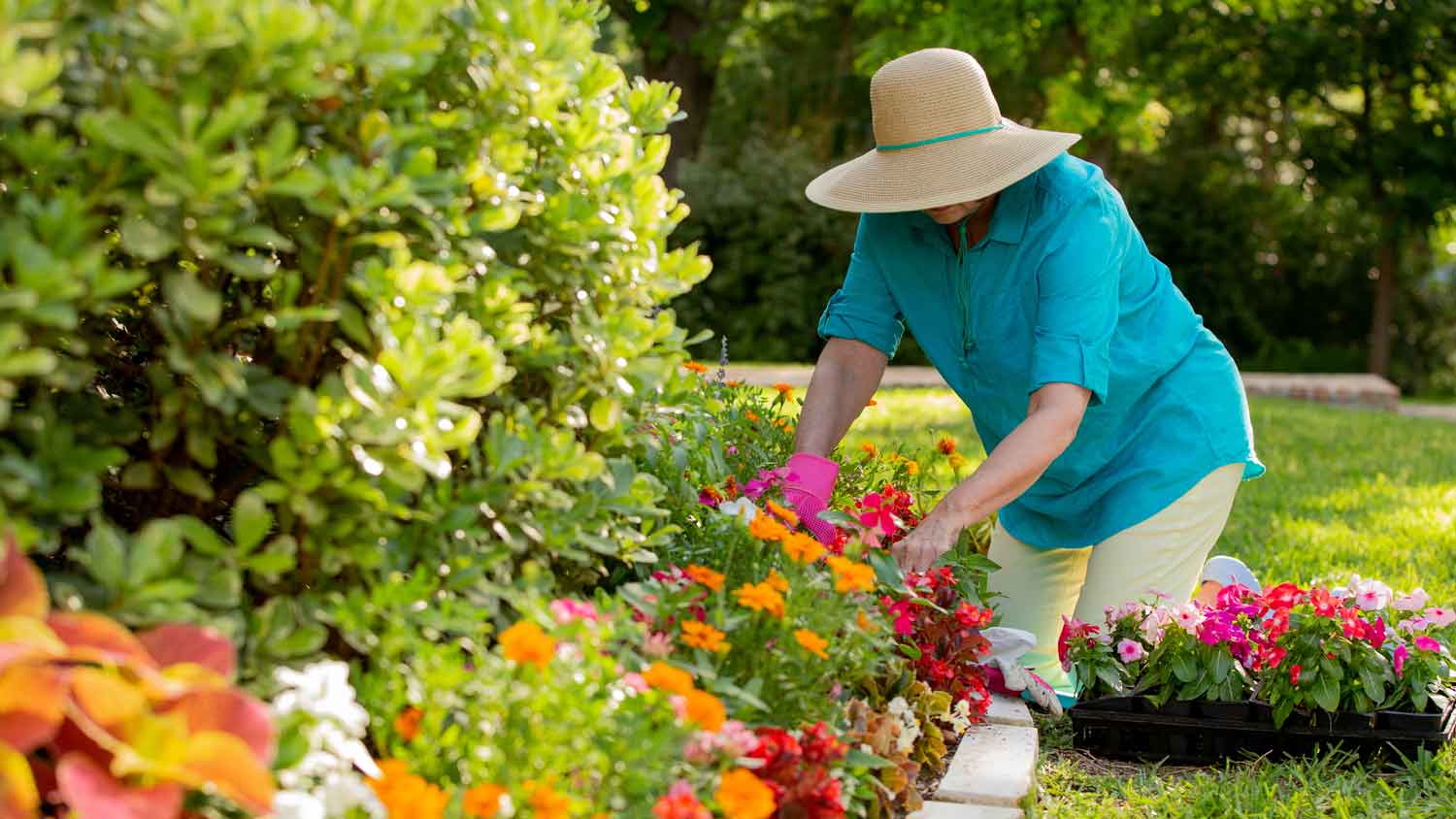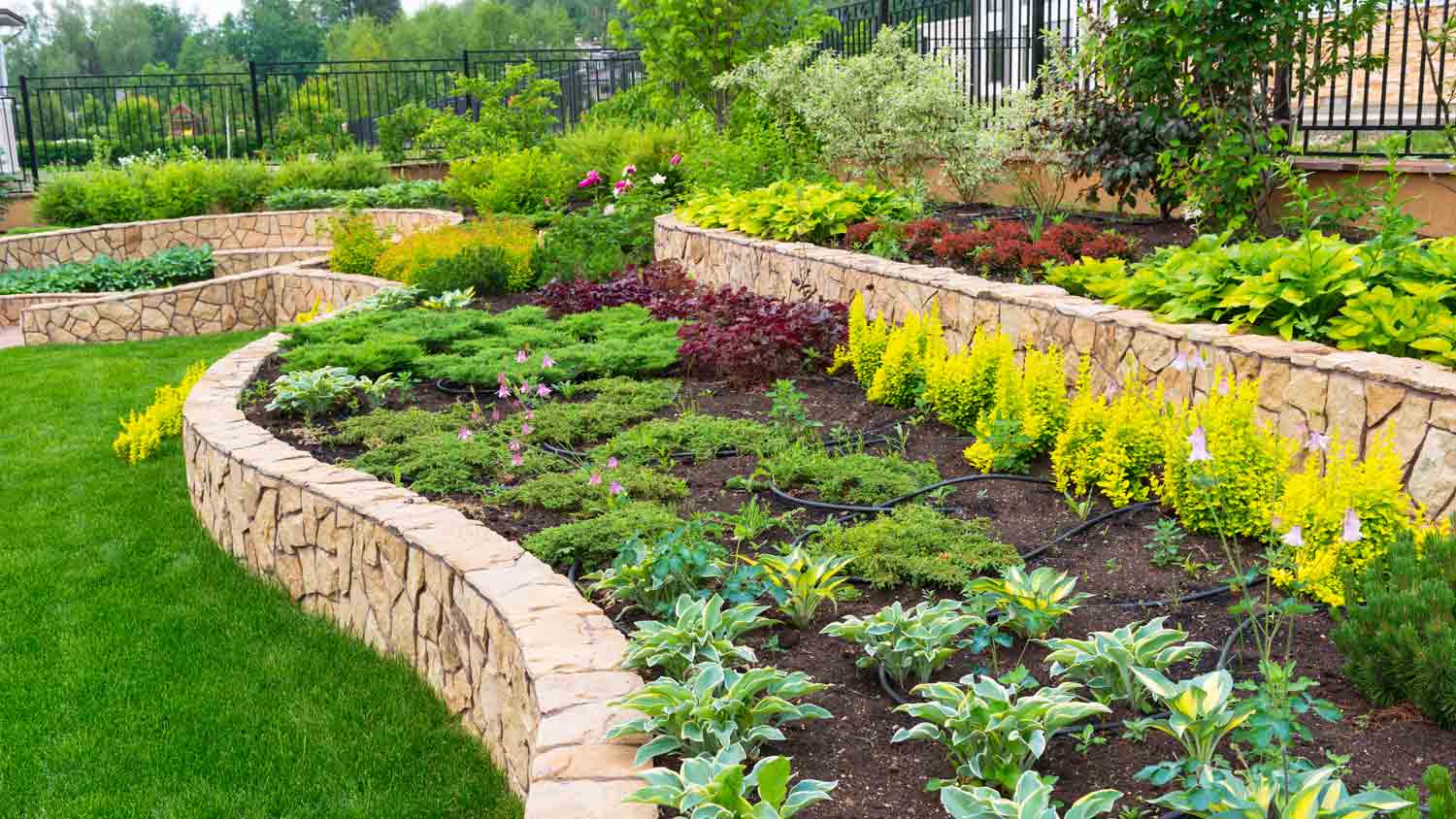Foundation Planting: What You Should Know
Improve your home’s curb appeal with well-designed foundation planting


Foundation planting can help conceal an exposed foundation and improve the look of your home.
Foundation planting design can be customized to match your home’s style.
Planting correctly will help your landscaping stand the test of time.
Well-designed foundation plant beds can add to your home’s curb appeal.
A variety of shrubs, bushes, trees, and perennials add interest and personality to your home.
Foundation planting is a great way to boost your home’s curb appeal with plants specifically chosen to surround the foundation. The plants you choose can enhance the look and personality of your home by incorporating a landscaping design that reflects your style and elevates your home’s overall appearance.
What is a foundation plant? In the past, there wasn’t much variety when it came to planting around the foundation. Many people picture sturdy evergreen shrubs cut into uniform shapes encircling their home to camouflage an exposed foundation, but modern choices include a variety of plants like flowering shrubs, trees, bushes, tall grasses, and perennial plants to add beauty and interest to your landscape and help your home look its best.
Identify Your Home’s Planting Needs

Your reasons for foundation planting can help you select the best plants for the job. Foundation planting can improve the look of your home in a number of ways, including:
Covering an exposed or unfinished foundation.
Adding interest to a new lot that doesn’t yet have mature landscaping.
Creating a visually appealing personalized look to complement your home.
Helping your home fit into the surrounding landscape.
Your planting needs may also vary depending on what type of foundation you have. Differences in material, amount of exposed foundation, and other factors can help you determine what will work best for your home. Figuring out what your home’s needs are will help guide you toward the best foundation planting design to suit your home and your own personal style. This can seem like a monumental task, so if you need a little help, get in touch with a local landscaper for some expert advice.
Choose a Focal Point and Style
For a cohesive look, set a focal point for your planting and work outward. For many people, the focus will be around the front door or entryway, drawing the eye toward the entrance and creating a welcoming look for visitors. Keeping a theme with similar plants, colors, or shapes can make the overall look seem more pulled together and less haphazard.
Determining the style you’d like to achieve will aid you in selecting the right plants for the job. Are you looking for something stately and formal? If that’s the case, classic evergreen shrubs that are planted in lines that mimic the lines of your home might be just right for you. If your style is more free-flowing and colorful, you might instead select flowering shrubs like rhododendrons with a mix of tall grasses and perennial flowers. There are no hard-and-fast rules for designing your foundation planting, so let your design reflect your own taste and the style of your home.
Choose Plants That Suit Your Home

There are a number of factors to consider when selecting plants to surround your foundation. Not only should they match the style you’re looking for, but you also need to take the following into account:
Size: Make sure you’re designing your landscaping based on the size of fully-grown plants. If you’re starting with immature plants, plan for the amount of ground they’ll cover when full-sized, as well as how high they’re expected to reach.
Drainage and Watering: The plants you select should match the amount of water you expect them to receive if you want to avoid regular watering. Consider your average rainfall and the drainage situation around your home and plant accordingly.
Scale: Smaller homes can be overshadowed by too-large plants. Similarly, a larger home will require plants that appropriately match its scale to avoid looking out of proportion. Choose plants that reflect the scale of your home for a balanced look.
Planting Zone: Choose plants that grow well in your hardiness zone, which takes into account your region and climate to determine which plants will thrive. Plants that are not zoned for your area will have a hard time flourishing.
Maintenance: Ideally, your foundation planting will not require time-consuming upkeep. Consider how much trimming, watering, pruning, and other maintenance the plants you select will need, and determine how much time or expense you’re willing to put into keeping them looking their best.

The Dos and Don’ts of Placing Plants Correctly

Once you’ve determined which plants you’re going to use for your foundation planting, you’ll need to plant them in the right places to complete the look and keep your landscaping functional, healthy, and working well with your home.
Don’t obstruct windows
Plants placed in front of windows should reach a maximum height that falls below the bottom of the window frame so as not to block sunlight. Remember to account for plant growth when deciding which plants to place in front of windows.
Do keep clear of drainage
Downspouts and other drainage should be left unobstructed by foundation plants. Make sure that the roots of bushes and shrubs won’t grow into any underground drainage and disrupt the function of your drainage system. Build your plant bed with the ground’s grade sloping downward extending from the highest point against the foundation.
Don’t plant right against your foundation
Leave space between your plants and your foundation so you can access your home if needed and so they can grow to their full size without root intrusion. Fully-grown plants should reach no closer than five feet from your house to keep branches and limbs away from your siding and to prevent stunted growth on the side of the plant facing the house.
In addition, be sure to leave a few feet of space around external fixtures like air conditioning units and utility meters. Although it’s tempting to cover up these unsightly eyesores, plants can interfere with their function and block necessary access, so give them a little room when planting.
Do consider sun and shade
Your landscape design should take into account how much sun and shade each part of your house receives. Choose plants that will flourish where you put them, and remember that planting close to the house directly under eaves will also affect the amount of sunlight and rainfall that those plants receive.
Plan for the Seasons

If you’re mixing evergreens, deciduous shrubs and bushes, and perennial plants, make sure there’s adequate coverage for each season. In areas that get colder during the winter, evergreen plants will provide coverage for an exposed foundation year-round, so keep these plants closest to your home to avoid empty spots once deciduous and perennial plants or decorative grasses die off during the cold season. Your first winter may expose gaps that need to be addressed by filling in with additional plants once it’s time to plant again.
Frequently Asked Questions
As with anything you do near your foundation, you’ll want to ensure proper drainage when you plant your foundation beds. Your drainage should run downhill from the highest point against your foundation to avoid water intrusion and incurring expensive foundation repair costs.
If you like the look of mulch in your plant beds, be aware that it can attract a variety of pests, including termites. To avoid wood-to-foundation contact, leave a one-foot barrier around your house and fill it in with rocks or gravel, starting mulch past that barrier and working it outward into your plant beds.
If your foundation is unfinished, has surface damage, or is just plain unappealing, foundation refacing can be another great way to increase your curb appeal and give your foundation a fresh look. Used in conjunction with foundation planting, refacing can completely change the look of your foundation and your home.





- Landscapers
- Tree Surgeons
- Gardening Services
- Landscape Architects
- Sod Installation
- Tennis Court Contractors
- Landscape Design
- Retaining Wall Companies
- Grading Companies
- Landscape Rock & Sand Delivery
- Mulch Delivery Services
- Pond Companies
- Artificial Grass Companies
- Shrub Removal & Trimming
- Backyard Design Companies
- Commercial Landscaping
- Koi Pond Services
- Backyard Landscapers
- Trampoline Assembly
- Hedge Trimming
- Pond Services
- Garden Design
- Outdoor Plant Watering
- Putting Greens
- French Drains
- Turf Installation
- Sod Removal Services
- Lawn Repair Services
- Brush Chipping Services
- Hardscape Contractor
- Landscape Rock Removal
- 47 Landscaping Ideas to Consider for Your Home
- How to Spruce Up Your Existing Garden by Adding New Plants
- How to Landscape Around Your House: 8 Helpful Tips
- How to Safely Move Your Indoor and Outdoor Plants in 5 Steps
- 11 Foundation Maintenance Tips to Keep Your Home Standing Strong
- 15 Tips to Help You Plan a Gorgeous Perennial Garden
- What a Foundation Inspection Is and How to Check Yours
- 11 Warning Signs of Foundation Issues
- 10 Common Landscaping Mistakes to Avoid in Your Garden
- 7 Tips for Protecting Your Home’s Foundation










